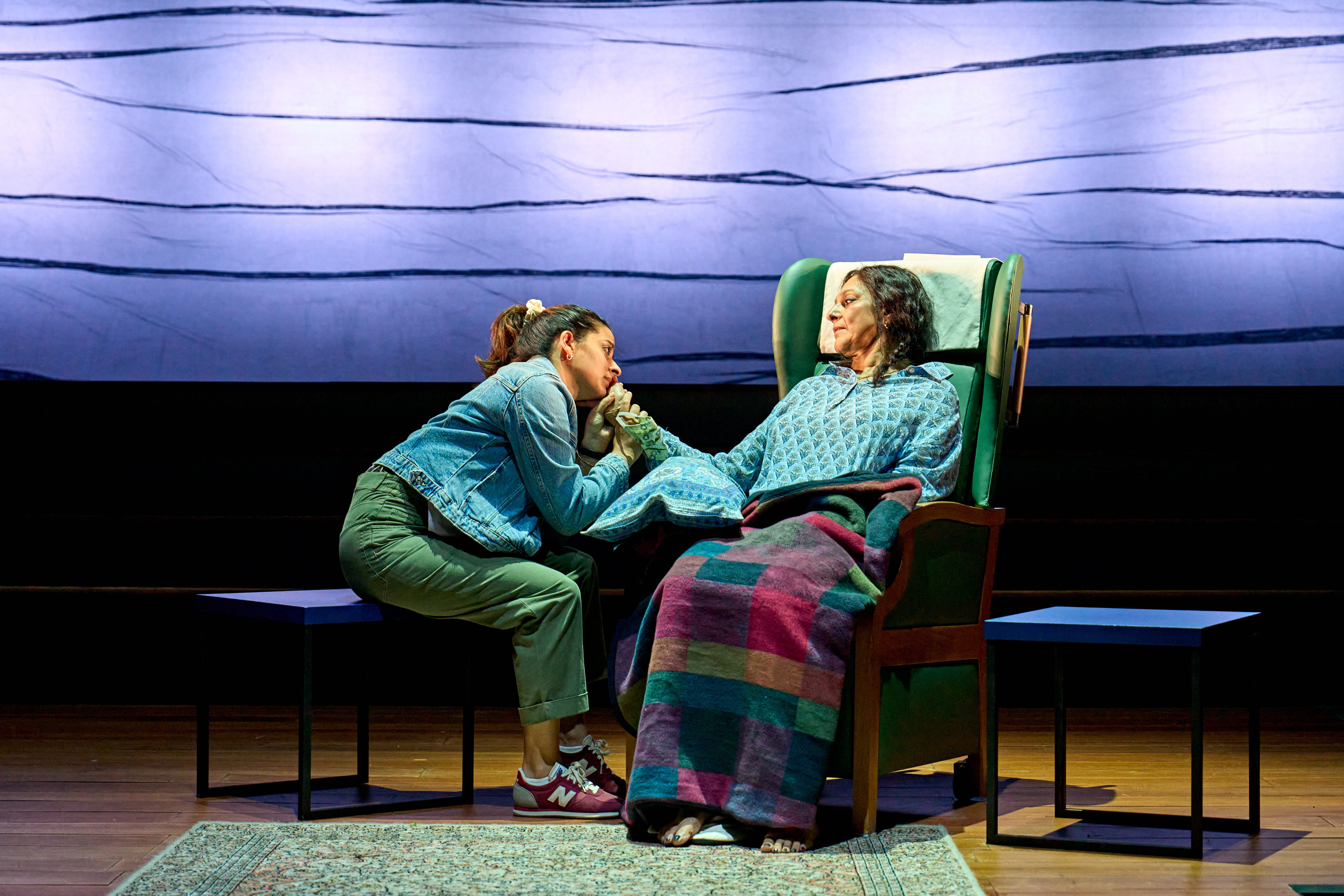There are few surprises in Tanika Gupta’s play about dementia. The ending’s in the title, and it’s a pretty grimly linear journey to get there. A Tupperware of Ashes follows steely Queenie – who came to the UK from Calcutta and set up a Michelin-starred restaurant – from forgetting names and burning dinner to her Alzheimer’s diagnosis and then on to, well, the Tupperware.
The play mashes together three disparate ideas: one is King Lear, with Queenie (the name is no accident) a formidable matriarch who decides to challenge her three children to prove who loves her the most. The second is the experience of Gupta and her peers as their mothers have passed. And the third is the stories of South Asian migrants as they age in a community far from the one they were born in. Three huge concepts, all vying for room in an interesting but unsatisfying production.
Meera Syal does a good job of enacting Queenie’s decline, as she transforms from being a spiky, steely authority to a quiescent hunch. Gupta gives her flashes of real nastiness – “I wish I’d aborted you,” she says to one of her sons – and challenges us to work out whether it’s the Alzheimer’s talking or Queenie.
Meanwhile her three children have to find a way to care for her even as things become increasingly bleak. I mean, really bleak. In one scene, daughter Kamala (Natalie Dew) shoves a fistful of beans violently into Queenie’s face out of desperation, because she’s refusing to eat. The second half is a pretty tough slog through her decline, which manages to be both depressing and a bit dull.
But as much as this morphs into a realist play about dementia, Gupta always allows a current of humour to remain. And there’s necessary relief in dead husband Ameet, played impishly by Zubin Varla, who is almost always on stage with Queenie, pulling her back to a simpler and more playful time in her life.
Pooja Ghai’s production doesn’t manage to find the emotional highs and lows that are there in the script. It’s too flat, too staid. But it has wonderful moments, particularly some smart magic tricks, and it often looks very pretty. A mesmerising impressionistic backdrop from designer Rosa Maggiora, with horizontal lines streaked across the surface, suggests different things: when lit blue, it becomes the water that’s so important to Queenie, or mottled brain matter when washed with yellow, all veiny and sinuous. And that lighting by Matt Haskins has a complexity that the play often doesn’t, subtly shifting between moods and tones as Queenie’s mind disintegrates.

The play itself doesn’t handle its tonal shifts nearly as well. One minute we’re deep in tense family drama, and the next we’re simply being told stuff in flat, rather expository dialogue. There are educational chunks about lasting power of attorney, and interesting debates about whether to follow someone’s dying wishes. There’s a constant jolting – from epic to intimate, from comedy to tragedy, politically attuned realism to poetic fantasy – but all of it is surface-scratching.
By the inevitable end, a slightly quirky add-on about the scattering of the ashes, it’s not quite clear what the play is about anymore. The dementia stuff has faded, and the Lear thing’s been sort of forgotten. It’s all a bit of a muddle: a play of many parts, struggling to find their sum.











